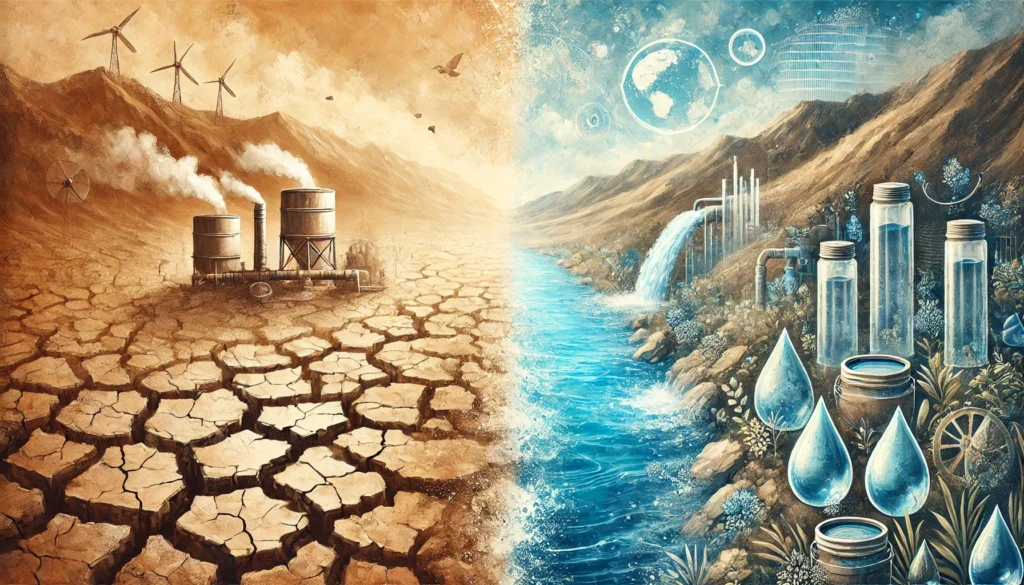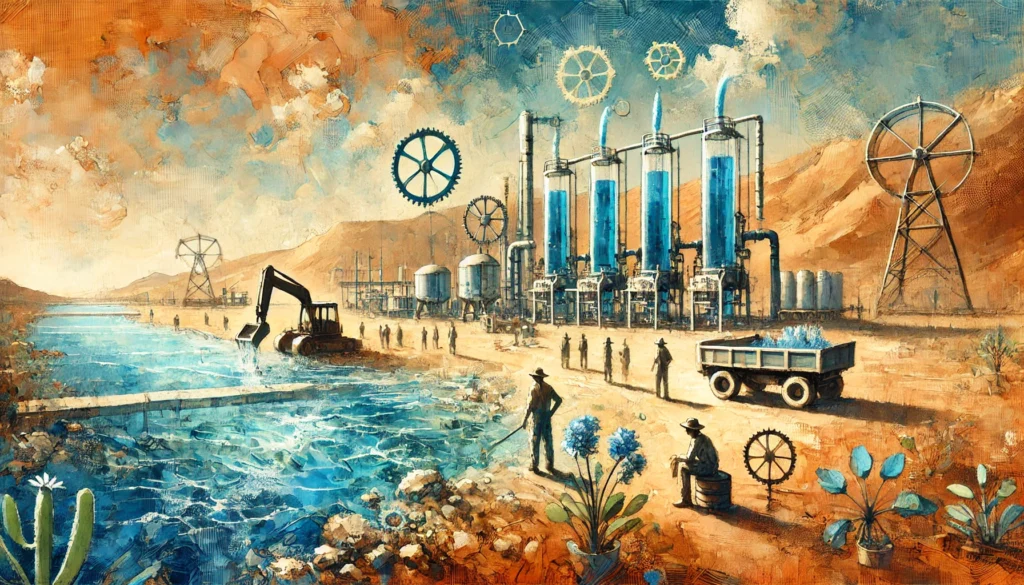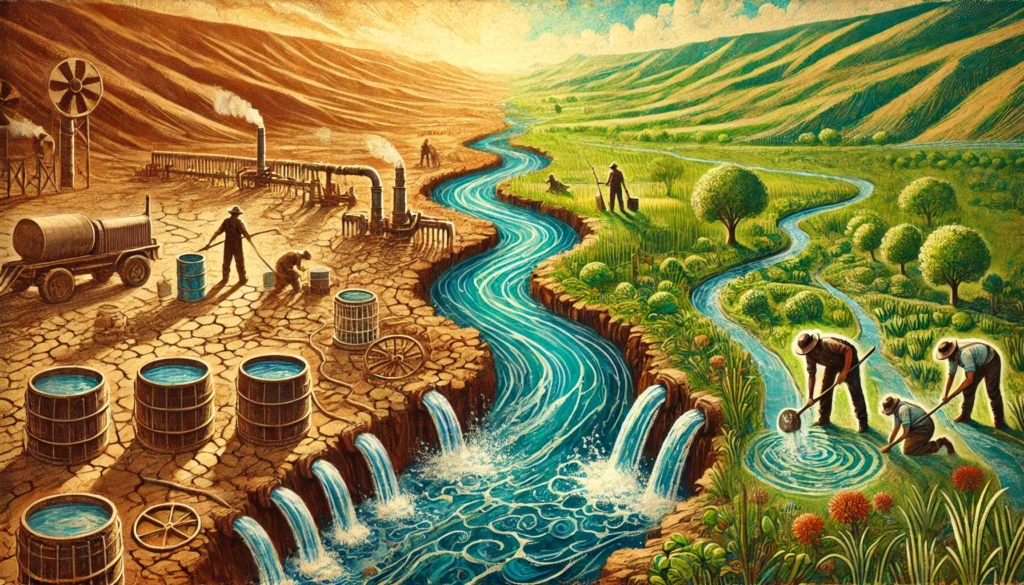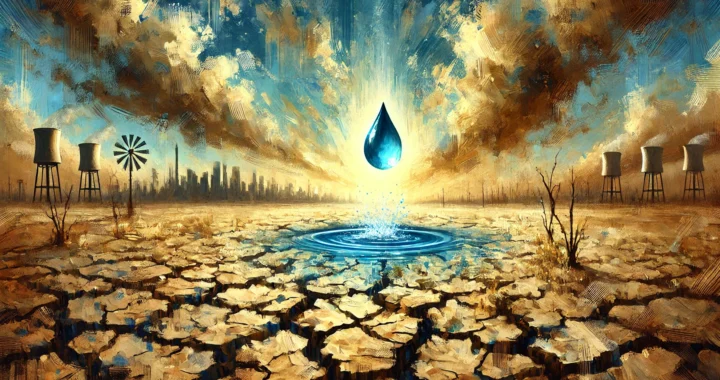Imagine a world where clean, drinkable water is a luxury few can afford. For over 2 billion people, this is not a grim scenario but their everyday reality. The global water crisis is not just an environmental issue; it’s a health, economic, and social emergency that impacts communities across the globe.
Every drop of contaminated water carries the risk of deadly diseases. Dry taps halt economic growth, and inaction pushes millions closer to despair.
At the heart of this crisis is a tangled web of challenges. Climate change intensifies droughts and floods, industrial pollution taints water supplies, and population growth strains already limited resources.
For many, these challenges feel overwhelming, leaving them asking, “What can I do that will make a difference?”
This post will discover the complexities of the global water crisis and shed light on practical, innovative solutions that empower individuals and communities to create change. From ground-breaking technologies to grassroots initiatives, you’ll discover practical ways to combat water scarcity and its ripple effects. Together, we can transform the future, one drop at a time.
What is the Global Water Crisis?
Understanding the global water crisis begins with recognising its scope and severity. Billions of people worldwide lack access to clean and safe drinking water, a basic human right essential for survival. This crisis stems from a complex interplay of environmental, economic, and social factors that have compounded over decades.

The global water crisis refers to the widespread scarcity of clean and safe drinking water, a challenge affecting billions of people globally.
Key factors include:
- Climate change causing droughts and floods: This disrupts water availability, leading to prolonged dry spells and extreme rainfall that overwhelm infrastructure.
- Pollution from industrial and agricultural activities: Contaminants like chemicals and fertilisers seep into water supplies, making them unsafe for consumption.
- Overuse of water resources due to population growth: Increased demand for water in densely populated areas depletes reservoirs and aquifers faster than they can replenish.
Example: In Sub-Saharan Africa, long droughts make it nearly impossible for communities to maintain agriculture or access fresh water. Similarly, in South Asia, industrial pollution has rendered rivers and groundwater undrinkable.
Practical solutions include:
- Smart irrigation systems: These reduce water waste and increase agricultural productivity.
- Rainwater harvesting: Simple setups that collect and store rainwater for daily use.
Global collaboration is crucial to securing clean water for future generations.
The Ripple Effects: How the Water Crisis Impacts Communities
The consequences of the global water crisis extend far beyond the lack of access to clean water. It affects every facet of life, creating ripple effects that influence health outcomes, economic stability, and social dynamics. These interconnected impacts reveal the true depth of the crisis and the urgent need for comprehensive solutions.
The effects of the global water crisis ripple through every aspect of life, from health to economic stability and social structures.
Health Impacts
- Contaminated water breeds diseases like cholera and typhoid.
- Approximately 505,000 annual deaths are linked to diarrhoea caused by unsafe water (WHO).
Economic Impacts
- Agriculture suffers: Water shortages reduce crop yields, threatening food security.
- Industries stagnate: A 2023 analysis found that $105 billion in business revenue is at risk globally due to water-related issues (Reuters).
Social Impacts
- Women and children bear the burden: Hours spent fetching water limits education and work opportunities.
- Conflict intensifies: Disputes over shared resources are on the rise (UN).
Tackling these ripple effects requires integrating water management into broader health, economic, and social policies.
Voices from the Frontlines: Stories of Affected Communities
The human side of the global water crisis comes to light through the stories of those living on its frontlines. Across the world, communities face daily struggles to secure clean water, often going to extraordinary lengths just to meet their basic needs. These accounts not only highlight the challenges but also the resilience of those affected.
Real-life experiences highlight the urgent need for solutions:
- Ethiopia: Families spend over six hours daily fetching water from unreliable sources, risking illness from contamination. One local woman stated, “We walk miles each day for water that may still make us sick. It’s our only option.”
- India: Urban slum dwellers rely on tanker trucks, which charge exorbitant prices for sporadic water delivery.
- Kenya: Solar-powered water pumps have transformed village life, enabling children to attend school instead of fetching water.
- Brazil: Rainwater harvesting projects restored clean water access during dry seasons.
Takeaway: Grassroots initiatives, like solar pumps and rainwater harvesting, offer scalable solutions. Amplifying these successes is essential to driving global awareness and action.
Innovative Solutions to the Global Water Crisis

Innovation is at the heart of addressing water scarcity. By combining advanced technology with creative strategies, we can overcome the pressing challenges tied to the global water crisis. The adoption of practical solutions demonstrates the potential to transform lives and ensure water security for all.
Addressing water scarcity requires innovative approaches that combine technology and practical solutions. Scaling these solutions globally is essential to maximise their impact, ensuring even the most vulnerable regions can benefit from advancements in water management.
Examples of transformative technologies:
- Desalination technology: Used in countries like Israel and Saudi Arabia, but energy efficiency remains a challenge.
- Smart water management systems: IoT technology helps monitor and reduce waste. Example: In India, farmers save millions of litres annually by using sensor-based irrigation systems.
- Recycling wastewater: Advanced purification systems in Singapore convert sewage into potable water, setting a global standard.
Quick Tip: With the right investment and collaboration, even water-scarce regions can secure their water future.
The Road Ahead: Challenges and Opportunities
The path to resolving the global water crisis is fraught with challenges, but it also presents opportunities for transformative action. Understanding the barriers and adopting forward-thinking approaches can help ensure clean water becomes a universal right, not a privilege.

Solving the global water crisis requires navigating complex challenges while seizing transformative opportunities.
Challenges:
- Funding gaps: Developing infrastructure like pipelines and desalination plants demands significant investment. The annual financial gap for water-related climate adaptation ranges between $194 billion and $366 billion (Wired).
- Political inertia: Water scarcity often takes a backseat to other crises, delaying policy changes. Transboundary disputes over rivers like the Nile hinder regional cooperation (UN).
Opportunities:
- Public-private partnerships: Morocco’s renewable desalination plant produces 275,000 cubic meters daily, showcasing scalable innovations (WSJ).
- Education and awareness: Teaching water conservation through school curriculum ensures future generations prioritize sustainability.
By addressing these challenges and leveraging opportunities, we can work towards a sustainable, water-secure future. Individuals can adopt water-saving habits, like fixing leaks and reusing greywater. Organisations can invest in advanced technologies, such as IoT water management systems, to monitor usage and reduce waste. Governments must prioritise policies encouraging sustainable practices and fostering public-private partnerships for infrastructure development.
Turning Hope into Action: Building a Water-Secure Future
The global water crisis is one of the defining challenges of our time, but it is not insurmountable. Addressing this issue requires a collective commitment from individuals, communities, organisations, and governments. As we’ve explored, the crisis is vast—impacting health, economies, and social dynamics—but so too are the opportunities to resolve it.
Investing in sustainable water infrastructure, fostering innovative solutions like desalination and wastewater recycling, and embracing smart water management can secure access to clean water for millions. Beyond technology, education and advocacy are powerful tools. Teaching communities about conservation, raising awareness on a global scale, and fostering partnerships between nations can drive significant progress.
For individuals, every small action matters. Simple changes in daily routines, financial support for water-focused charities, and spreading knowledge can ripple out to create meaningful change. It’s not just about water conservation; it’s about safeguarding lives, ensuring dignity, and building a future where access to clean water is a universal right.
We stand at a critical crossroads. The choices we make today will determine whether water becomes a symbol of conflict or a cornerstone of global unity. Take action now, whether by joining local efforts, advocating for policy changes, or supporting innovative projects. Together, we can turn hope into action and secure a water-secure future for generations to come.

